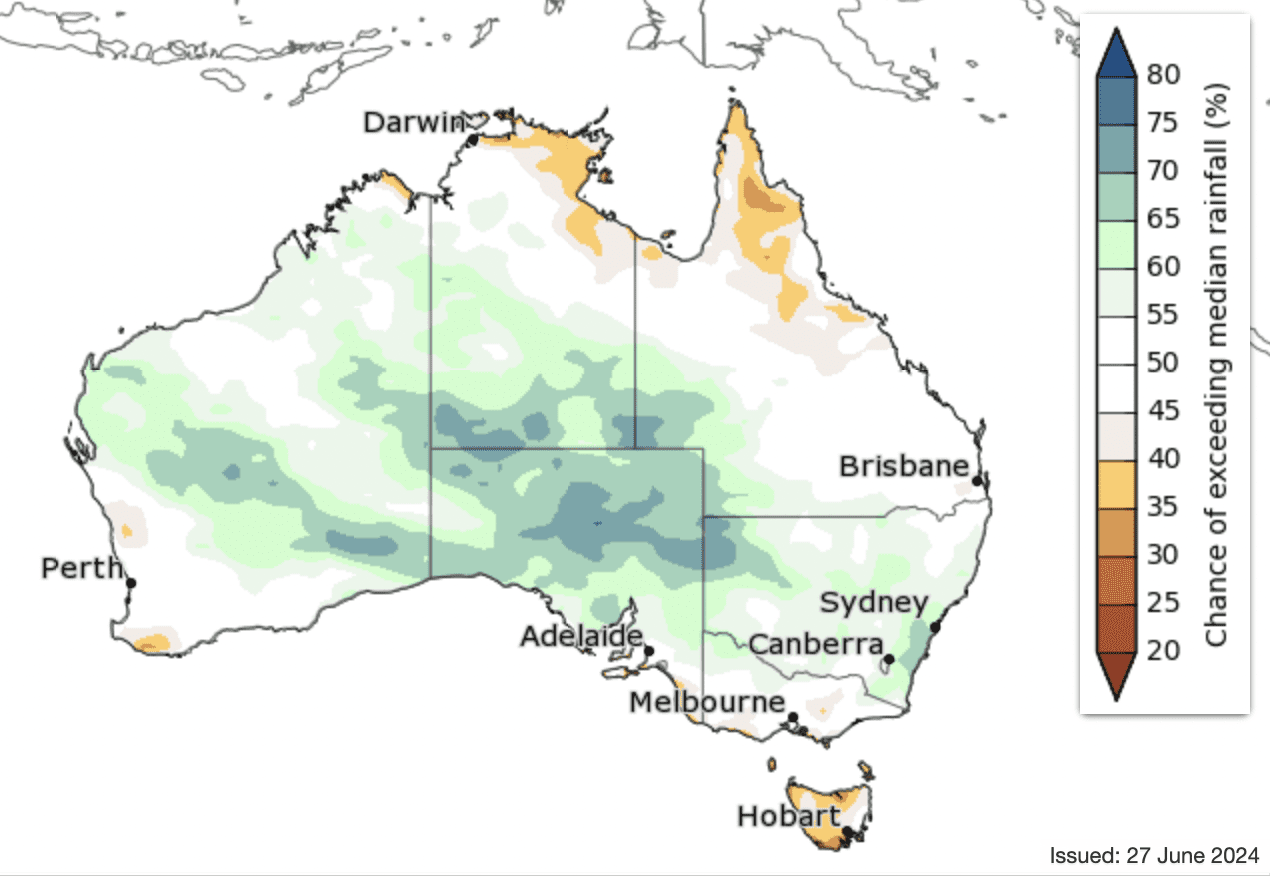BELOW average rainfall is likely – 60 to 70 percent chance – across much of far southern Australia including Tasmania in July, according to the Bureau of Meteorology.
This includes areas that have recorded serious rainfall deficiencies since February — totals in the lowest 10pc for years since 1900).
Rainfall is likely – 60 to 80pc chance – to be above average for the west coast and pastoral regions of South Australia, extending into south-east Western Australia, and the Northern Territory’s south, and along isolated parts of southern coastal New South Wales, the bureau said.
May to September is the northern Australian dry season; tropical northern Australia typically receives very low rainfall during this time. Large areas receive less than 25 mm for the season, meaning only a small amount of rainfall is needed to exceed the average.
July
- For much of Australia, rainfall is likely to be within the typical range for the month.
- Parts of south-west WA and Tasmania have an increased chance of unusually low rainfall1.
1Unusually low rainfall is defined as the driest 20% of July periods from 1981 to 2018.
July to September
- Rainfall is likely to be within the typical range for the season for eastern, northern and western Australia.
- Isolated parts of northern Australia are likely to receive below average rainfall, but being the northern Australian dry season, rainfall is typically low at this time of year (totals of less than 25 mm over July to September). Rainfall is also likely to be below average for parts of Tasmania.
- Rainfall is likely (60 to 80pc chance) to be above average for the West Coast and Pastoral regions of SA, extending into south-east WA, and the southern NT; and along isolated parts of southern coastal NSW.
Warmer July to September days and nights very likely across Australia
- Above average maximum and minimum temperatures are very likely (greater than 80pc chance) across Australia.
- An increased chance of unusually high maximum temperatures2 for all of Australia.
- Unusually high minimum temperatures2 are very likely (greater than 80% chance) for large areas of the country, particularly along the east coast and southern WA.
2 Unusually high maximum [minimum] temperatures refer to the warmest 20% of observations for July to September days [nights] between 1981 and 2018.
Source: Bureau of Meteorology.


HAVE YOUR SAY